Drinking coffee in Germany is a strong and deep-rooted tradition, indeed, the opening of the first establishment to serve this beverage dates back to 1679 (in Hamburg) and today the Germans are the second largest importers of coffee in the world.
If you love traveling and you have visited this country, you have probably tasted an Eiskaffee, a Pharisäer Kaffee or a Cafè Crème: actually there are many different versions of German coffee.
Before taking a closer look at the characteristics of each one, though, we are going to tell you a little bit of history, from the end of the 19th century to the last century, right up to the fall of the Berlin Wall.
Coffee in Germany and the invention of the filter
A lot of coffee is consumed today in Germany, but it wasn’t always that way: indeed in the second half of the 19th century, Fredriech II of Hohenzollern, king of Prussia, took restrictive measures which limited consumption of this drink severely, until it was completely forbidden.
The huge success of coffee, and consequent increase in its trade, had given rise to complaints from the beer brewers, so the sovereign decided to establish a monopoly on coffee roasters.
The law banning the possession and consumption of coffee was abolished only when Friedrich II died.
For enthusiasts, however, the tribulations were not over at all, since after the Second World War this product, like many others, became almost impossible to find in the German Democratic Republic (commonly known as East Germany).
Melitta Bentz, the lady who invented the coffee filter
A little piece of trivia: perhaps not everyone knows that it was a German lady who invented the first coffee filter for a coffee machine.
Melitta Bentz, in the early 20th century, was tired of finding coffee dregs in her drink, so she started experimenting in her kitchen and in 1908 patented the filter for the cafetière, which she started to produce in partnership with her husband.
German coffee: what variations are there?
Considering how much the Germans love this drink, it’s hardly surprising that there are many variations on the German coffee theme; each one more delicious than the other.
And yes, they may not resemble the traditional Italian espresso, at all, but they seem tailor-made to warm up a cold winter afternoon, or cool you down in the summer heat.
So let’s see what the ingredients are for preparing Pharisäer Kaffee, Eiskaffee and Cafè Crème.
Pharisäer Kaffee: ingredients and preparation
Espresso with a shot of alcohol, the Sambuca with the fly and Irish Coffee are just some of the preparations in which alcohol and coffee are brought together in happy marriage.
In Germany, the winning combination often involves rum, for example in the Pharisäer Kaffee, together with cocoa and whipped cream.
It would appear that its origins date back to the times of the Protestant preacher, Gustav Beyer, who admonished his faithful followers because they drank too much alcohol.
This is the reason why, during a festival in which everyone was drinking coffee with alcohol, the clergyman was served his coffee without any rum added, which provoked a certain resentment in him to the point where he exclaimed “Ihr Pharisäer!”, in other words “Pharisees!”, in clear reference to the Bible.
In Germany, this drink is prepared using a particular type of filter coffee machine, which is in the shape of a funnel (connected to a jug). Inside, the ground coffee is placed in a paper filter, onto which the boiling water is poured.
If we want to prepare a Pharisäer Kaffee at home, though, we can also use coffee prepared using the mocha: here are the ingredients and the method to follow.
Ingredients
● 2 shots of Delicato Filicori Zecchini mocha coffee
● 1.35 fl oz of rum
● 3 spoonfuls of fresh whipped cream
● bitter cocoa powder
● sugar to taste
You can prepare a Pharisäer Kaffee by pouring the coffee into a cup and adding the sugar; after mixing well, add the rum and decorate with fresh cream and bitter cocoa powder.
Eiskaffee, the most delicious specialty
Hands up all those who would turn down a cioccolato affogato!
There is a German version which is also well-loved in Austria and Alto Adige, and deserves to be tasted more than once: it is Eiskaffee.
Ingredients
● two shots of concentrated coffee or a strong long Filicori Zecchini coffee
● two or three scoops of vanilla ice-cream
● bitter cocoa powder
● whipped cream
To prepare the Eiskaffee you simply need to place some scoops of ice-cream in the bottom of a glass, pour the coffee over it, decorate with whipped cream and a light dusting of bitter cocoa powder.
This drink also exists in the chocolate version, perfect for those of you who cannot resist a touch of sweet indulgence, (called Eisschokolade).
Cafè Crème, the classic German coffee
The most classic German coffee recipe, though, is the Cafè Crème: if you order one, it will be served in a cappuccino cup, but larger than the one typically used in Italy.
The cup is filled about 3/4 full with long coffee.
The extraction process of this coffee takes about 30 seconds in the espresso machine, with a double portafilter and about 0.53 oz of coffee powder.
Finally, remember that if you order a coffee in Germany (“Ein Kaffee”, and you put the emphasis on the final “e”), it is highly likely that you will be served a Cafè Crème, rather than an espresso.
Did you know about the variations of German-style coffee? Have you ever tried them? Tell us about it in the comments.
 Europe
Europe



